Hertford Art Society 70th Open Exhibition
April 29th – May 6th 2023

This year’s Exhibition celebrated 70 years of such shows, at different locations around Hertford as the Society changed venues for meetings and Exhibitions. See Trevor Chamberlain’s article below for his recollections of Exhibitions past.
Each year the style of the Exhibition varies. The selection of work is made by a panel of practising artists who are completely independent of the Society. This year we were delighted to welcome Olivia Bishop, Jude O’Sullivan and Mike Todd as judges for both the 2D work and 3D items. The wide variety of work submitted each year and the range of expertise and opinion of the judges ensures that each show has a unique mix of artworks. 110 artists submitted 435 items for consideration this year. 316 2D works were selected for hanging and these, together with 20 sculptures and 3D items, provided visitors with a varied, colourful and stimulating Open Exhibition at Cowbridge Halls. The work of 104 artists in total was displayed. This included work by 57 Hertford Art Society Members. There were many new exhibitors this year and the Society thanks all the artists whose contributions combine to make our Exhibitions so exciting.
The exhibits included oils, acrylics and watercolours; etchings, lino and screen prints; digital images; pastel, pencil, charcoal and ink; collage and 3D works in a stunning variety of materials. There was something for everyone: townscapes and seascapes, atmospheric landscapes, abstracts, figures with stories to tell, still life images (lots of lemons, flowers and jugs), birds and various animals including some very dramatic zebras and elephants. This year’s show included a great many beautifully executed and very moving portraits. Some works were bold, others delicate, some rich in colour, others monochrome. Work to suit all tastes. Additional works were displayed at other venues in Hertford.
Open for 8 days the exhibition attracted many visitors from a wide area. Hundreds of visitors cast their votes for their favourite exhibit - the winner was Love by Helen Tansley.
This Exhibition, the 70th Annual Open, was very well received and thanks go to all the people who contributed their time and effort in making it such a success.
Prize winners
The exhibition takes place at Cowbridge Halls, Cowbridge, Hertford SG14 1PG and runs from Saturday 29th April to Saturday 6th May 2023 and these are the Prizewinners
- The John Goss Prize Best in Show awarded to Jess Williams for ‘Man in Monochrome’
- The Bill Dale Award Best Member awarded to Sally Hunter for ‘Villa Simiali’
- The Brushes Award by A.S. Handover Ltd for best watercolour awarded to Valerie Gudge for ‘Lockdown 2020’
- The Mayors Award Sponsored by The Arts Society East Herts for best 3D awarded to Keith Lawrence for ‘Dragon’s Keep’
- The Lady Laming Award Best Abstract awarded to Anne Gascoigne for ‘Fallen Bird’
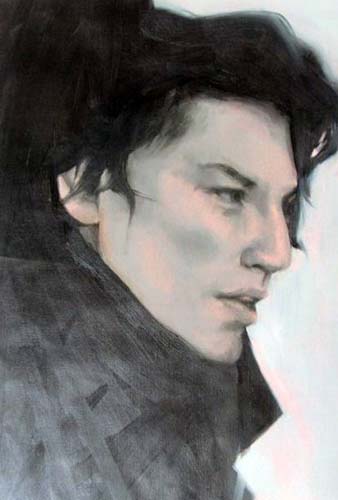
The John Goss Prize Best in Show
Sponsored by
![]()
awarded to Jess Williams for ‘Man in Monochrome’

The John Goss Prize Best in Show awarded to Jess Williams for ‘Man in Monochrome’
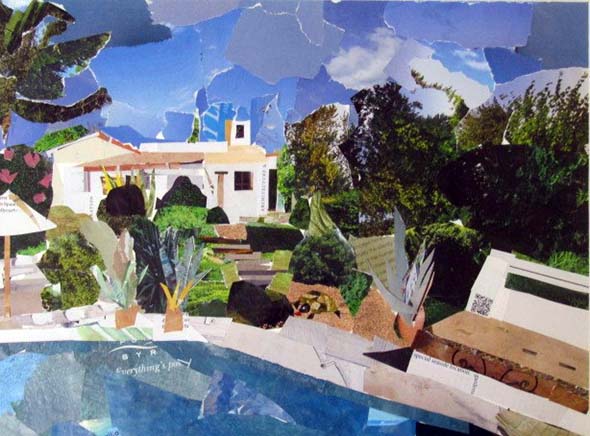
The Bill Dale Award Best Member
awarded to Sally Hunter for ‘Villa Simiali’
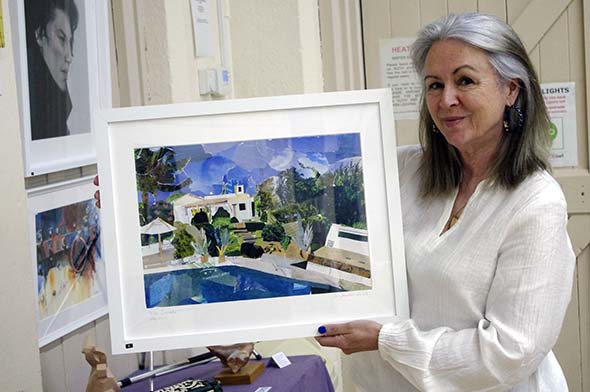
The Bill Dale Award Best Member awarded to Sally Hunter for ‘Villa Simiali’
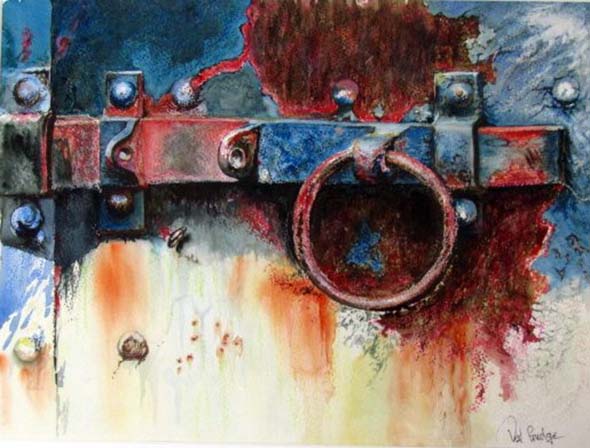
The Brushes Award by A.S. Handover Ltd for best watercolour
awarded to Valerie Gudge for ‘Lockdown 2020’
![]()
The winner also receives watercolour paper awarded by St Cuthbert's Paper Mill.
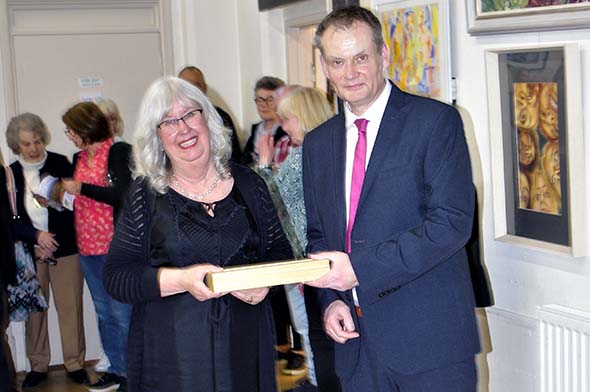
The Brushes Award by A.S. Handover Ltd for best watercolour awarded to Valerie Gudge for ‘Lockdown 2020’
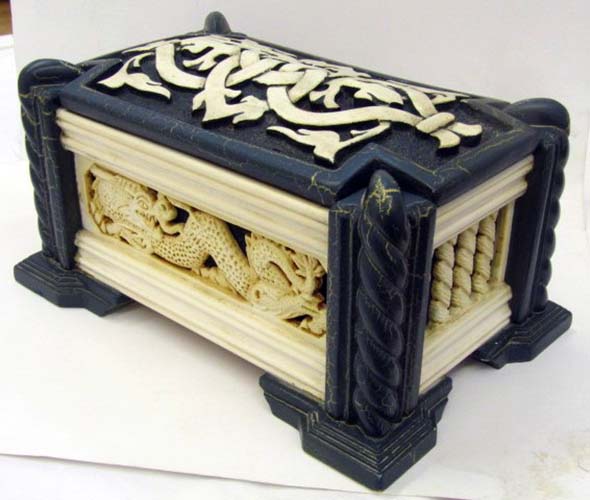
The Mayors Award Sponsored by The Arts Society East Herts for best 3D
awarded to Keith Lawrence for ‘Dragon’s Keep’
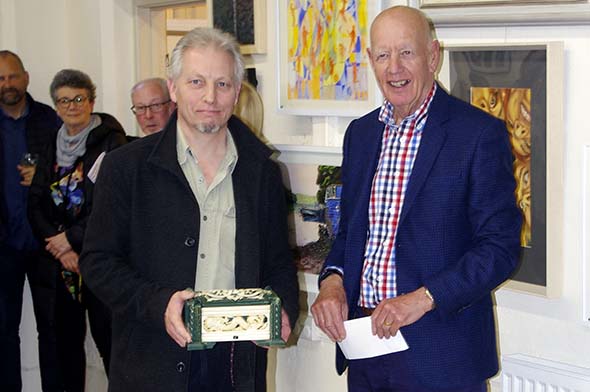
The Mayors Award Sponsored by The Arts Society East Herts for best 3D awarded to Keith Lawrence for ‘Dragon’s Keep’
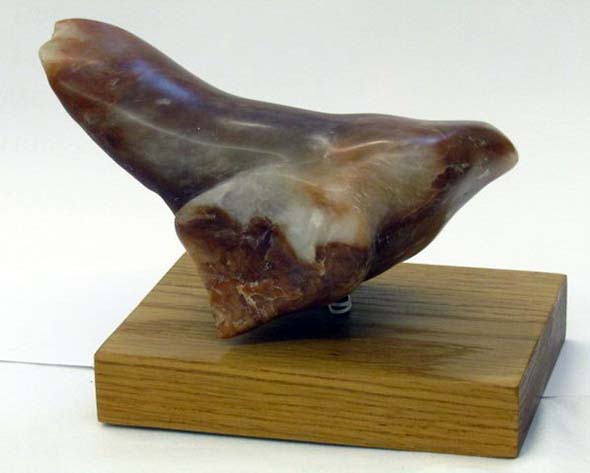
The Lady Laming Award Best Abstract
awarded to Anne Gascoigne for ‘Fallen Bird’
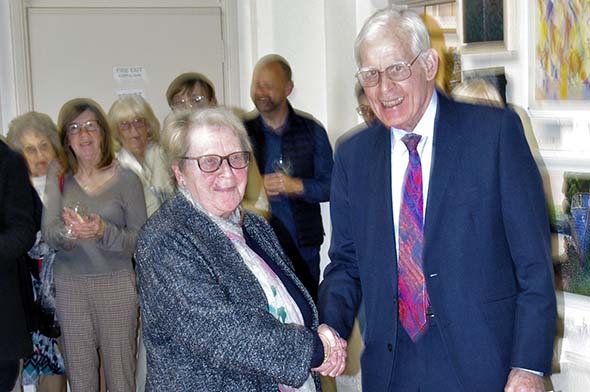
The Lady Laming Award Best Abstract awarded to Anne Gascoigne for ‘Fallen Bird’

Visitors’ Choice awarded to Helen Tansley for 'Love'
70th Annual Open Exhibition April-May 2023 - 51 images, click here to view.
For full report, click here for more details.
70th Open Exhibition
Reflections and recollections by Trevor Chamberlain
This year (2023) we are celebrating 70 years of activities since the Society was formed in 1953, and as I am the longest serving Member, I have been asked to recall and record some past artistic activities and events since inauguration.
I was not one of the twenty or so people involved with the newly formed Society as I was serving 2 years National Service, but I can recall visiting that first Exhibition and Sale at the Durrant Hall which was located by the weir in Old Cross, Hertford. The Exhibition was held in aid of the Lord Mayor of London’s Flood and Tempest Fund and 113 exhibits by Hertford Art Society Members together with invited works by notable established contemporary artists of the day including Henry Moore, Frank Brangwyn, Adrian Heath, Terry Frost, Wyndham Lewis, Ben Nicholson, Rodrigo Moynihan and Victor Pasmore resulting in a very successful show. At the time I remember thinking that I would like to become involved in such an impressive society, so in 1954 I submitted an Oil “Lago Di Como” which was included in the exhibits on show at the Corn Exchange that year.
It wasn’t until August 1955, when I was eventually discharged from the Army that I was able to become an active member of Hertford Art Society. By then the Society had become established with the Rt. Hon. Marquess of Salisbury as President and Henry Moore and Ashley Havinden as Vice-Presidents. The tradition of inviting celebrated painters and sculptors of the day continued for some years and included such artists as Sir Alfred Munnings, John Nash, Ronald Maddox and Mark Gertler (1902-1939). This Gertler oil was a large painting of a voluptuous nude but the owner did not have any title for inclusion in the 1963 catalogue. So prompted by myself and my wife, Elaine, the HAS Committee gave it the title of “Queen of Sheba”. The painting was then sold from our exhibition to the Tate Gallery for £250. It is now on show from time to time at the Tate bearing the title we gave it and could now be worth something approaching £100,000.
For our 40th Exhibition Alan Davie lent one of his paintings “HOPI STUDIES No. 7.1990 OPUS G 2119”. As was usual Henry Moore lent a work each year for our annual exhibitions which were held at the Corn Exchange until about 1980. Then after four years exhibiting at the Museum Annexe (until 1984) we returned back to the Corn Exchange until 2006.
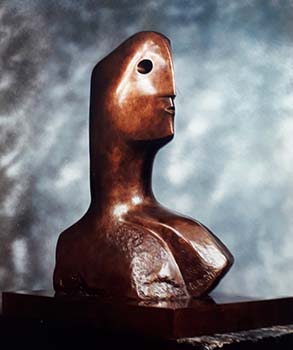

"Head" by Henry Moore - Bronze 1984 (1 of 9) - Exhibited in 1987 Open Exhibition
Soon after inauguration in the mid-fifties the Society met weekly on Tuesday evenings for practical painting sessions and talks in the Priory Rooms (adjoining the Friends Meeting House) which we eventually outgrew and moved on to the Museum Annexe. After a year or two there we moved yet again to the refurbished Corn Exchange. In about 2007 the Cowbridge Halls became available to us for all our painting and exhibiting activities, so the only activity which is conducted away from the premises is our outdoor sketching programme in the summer months.
The Open Annual Exhibitions and the Member’s Annual Shows are now all mounted under the one roof. Membership currently averages 120 members.
Over the years since my involvement in the Society my wife Elaine took on the role of General Secretary for a long period and then a substantial period as Exhibition Secretary. My own contribution to the functioning of the Art Society was a term as Chairman, approximately 35 years as Exhibition Coordinator and over 20 years as Summer Programme Secretary.
The Art Society would like to take this opportunity to acknowledge and thank the current Marquess of Salisbury for his continuing involvement in our Society, following in the footsteps of his father, Lord Salisbury.
I am pleased personally to have this long association with such a fine Society and appreciate and thank the Membership for elevating me this year to become Vice-President.
Trevor Chamberlain ROI RSMA
Vice-President
Dance and Draw Workshop
Butoh Dance demonstrated by Fabrizia Verrachia
11th April 2023
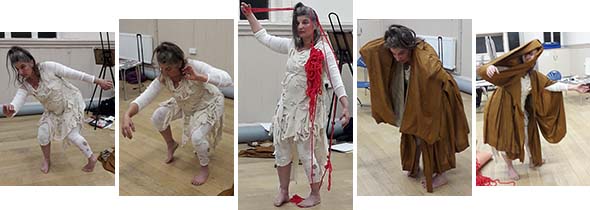
Butoh (舞踏, Butō) is a form of Japanese dance theatre that encompasses a diverse range of activities, techniques and motivations for dance, performance, or movement. Following World War II, Butoh arose in 1959 through collaborations between its two key founders, Tatsumi Hijikata and Kazuo Ohno. Common features of the art form include playful and grotesque imagery, taboo topics, and extreme or absurd environments. It is traditionally performed in white body makeup with slow hyper-controlled motion.

Butoh is an attempt to uncover the dance that already exists, it must emerge from within, and not be imposed from without. Butoh uses 'reduction' to great effect, for example, stillness and slow motion are well known to audiences of Butoh.
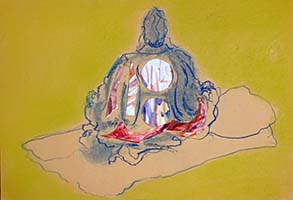
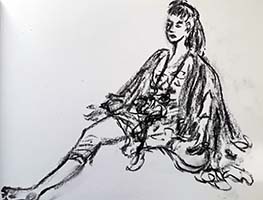
Fabrizia Verrachia runs workshops and retreats in Butoh, Indian Temple Dance and Yoga and she described Butoh as a way of moving energy and expressing contrasts – dark / light, sublime / grotesque. The spirits of trees, nature, wind, air are explored with the dancer’s dramatic inner world being expressed in the dance. Among the movements she demonstrated were:
- Meditative walk – a very slow walk with your ancestors behind you and the future ahead, a walk through a meadow trying to spare the flowers, or on hot coals, or through thick mud, the dancer feelings these different experiences and expressing them through subtle movements and responses.
- The Wave – imagine you are part of the sea, caressing all you come across on your travels.
- Seaweed – lying on a sandy seabed being moved by the water like seaweed.
- A Flower – opening and closing as it grows and changes.
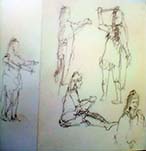
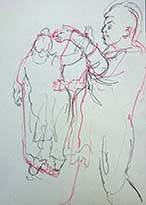
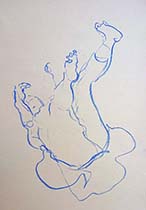
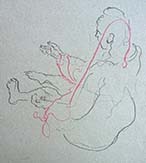
Fabrizia demonstrated these and other moods with slow, graceful movements at times or frantic, jerky postures at others. She had chosen to wear a ragged bodysuit and leggings with a Japanese monk’s cape picked up on her travels. This outfit perfectly suited the surreal mood of the evening. Initial sketches followed these movements, trying to swiftly capture the body shapes and mood. Fabrizia then held some short poses during the dance, 2 minutes to translate the essence of her pose into a sketch, sometimes 5 minutes allowed an image to form. This was all about movement and the best plan was to forget about the image and just enjoy the beautiful performance and let the sketches come. After a break, we enjoyed two longer poses as Fabrizia modelled for us. This was a strange, exciting evening.
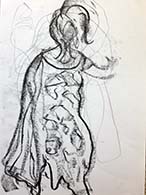
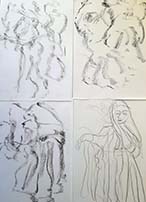
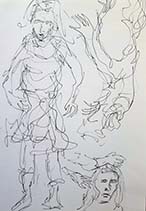

This form of dance was new to most of us and it was fascinating to watch the portrayal of life experiences and moods expressed in this way. Fabrizia was warmly thanked for sharing her love of this dance form with us. The sketches give some idea of the graceful shapes and movement in her performance.
Hertford Choral Society Easter Concert
J S Bach’s St Matthew Passion
25th March 2023

Each year the Hertford Choral Society invites Hertford Art Society to illustrate their Easter concert with paintings to hang down the central pillars of the church in which the concert is performed – All Saints Church, Hertford. The concert is always a serious theological work, very often a Passion - the Christian term for the short final period before the death of Jesus Christ.
This year’s concert was J S Bach’s St Matthew Passion – glorious music, two orchestras, six principal soloists, 8 choir soloists and two choirs. It was a big production and met with huge acclaim.
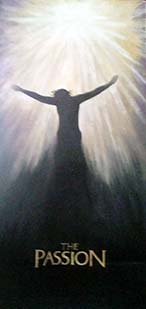
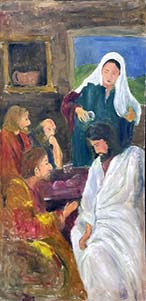
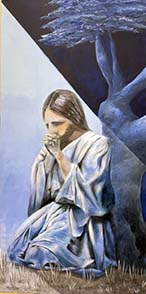
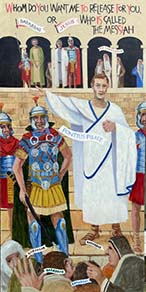
Left to right, by: Alan Hobbs, Uday Chitragar, Lucy Dale, John Jarratt.
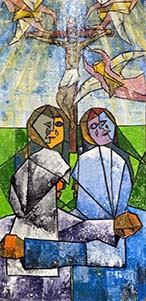
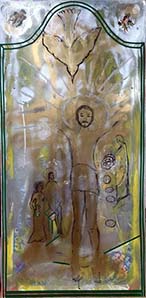
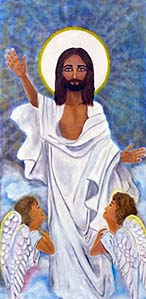
Left to right, by: Geoff Bennett, Ana Fleming, Alona Kushnirenko.
The paintings need to conform to a strict format to sit well on the church’s pillars – 4’ deep by 2’ wide; not the easiest shape to paint to. An additional challenge is the subject matter – not much action and what there is mostly despondent.
The HAS members who volunteered did a great job. Several newcomers to the task – Lucy Dale, Uday Chitragar, Lucy Dale, Alona Kushnirenko, Alan Hobbs together with three of us who have previously painted for the Choral Society - John Jarratt, Ana Fleming and myself, Geoff Bennett.
Spring Equinox Celebration
Still Life Workshop with Flowers, leaves and buds
21st March 2023
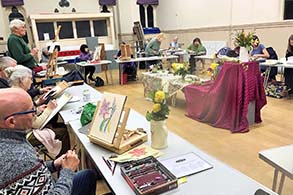
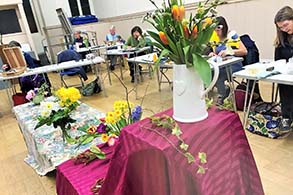
Members brought along some lovely spring flowers for this untutored workshop. There were tulips in a stunning white ceramic jug with soft velvety willow branches, daffodils, hyacinths and anemones in a variety of vases displayed on a bright magenta cloth (which was a gorgeous contrast) and one of softly patterned flowers.
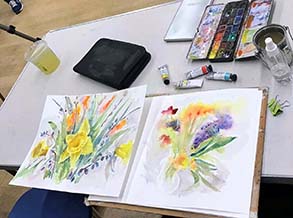

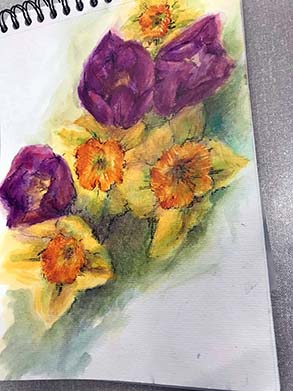
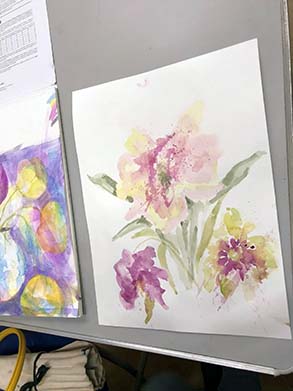
Artists were free to sketch, draw or paint in any medium of their choice. This was a very enjoyable workshop. The artworks produced are colourful studies and just right for this time of year.
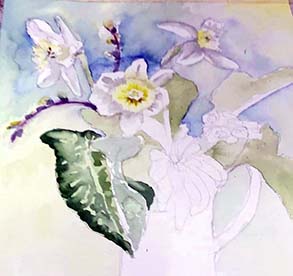
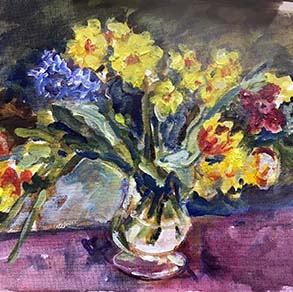
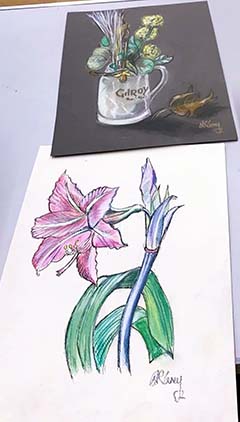
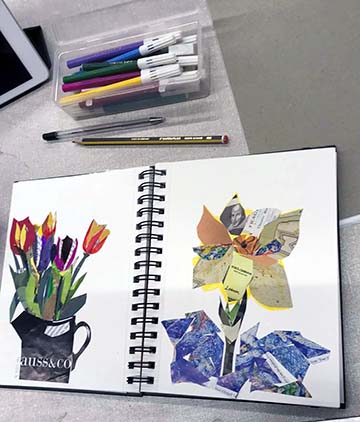
Mixed Media Workshop based on the Old Masters
Led by Marianne Dorn
21st February 2023
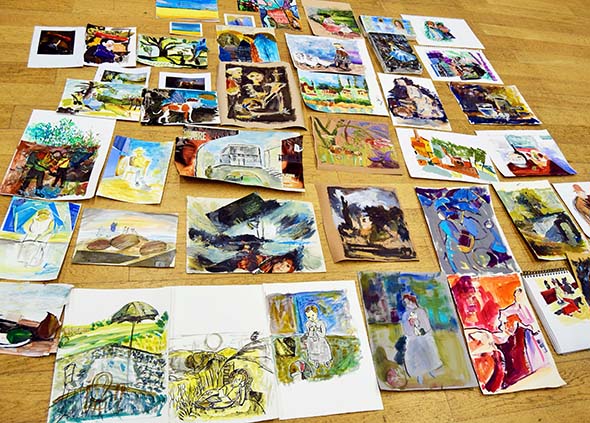
Marianne Dorn is an accomplished artist and Member of Hertford Art Society. During the course of the evening we would each study three different paintings of our choice and build up a multimedia interpretation of each. Marianne had set out several examples of her own work to look at before the session started and also a sketch by Frank Auerbach.
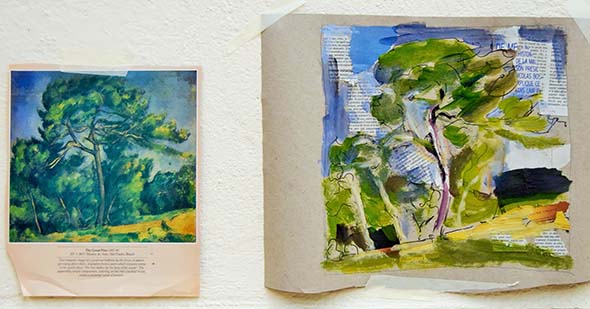
Auerbach was inspired by the Old Masters in the National Gallery and went there on an almost daily basis to stand in front of a painting to study it and make sketches. Aspects of these sketches then informed his own paintings. A study of a portrait could influence his landscapes and vice versa. Many of Auerbach’s sketches are on display in the Espresso Bar at the British Museum.
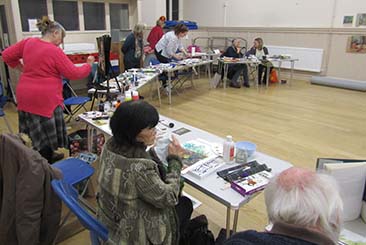
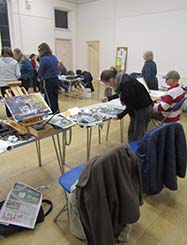
Marianne led us through the session devoting half an hour to each study. We had been asked to bring three sheets of robust paper, glue, acrylic paint kit, and pencils and three images which we would like to work from - Figurative paintings with a strong composi-tional element work best for this. Landscape, still life or pictures with people in them. Ex-ample painters – Cezanne, Constable, A. Gentileschi, Titian, Rembrandt, Turner, Rubens, Vermeer, etc. Marianne had brought a selection of photos as back up.
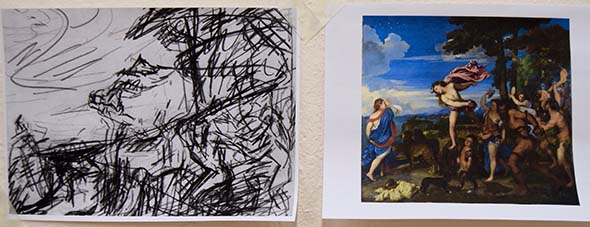
For the first sketch we focused on the structure of the composition, in the second we considered the energy of the painting and in the third we focused on movement.
During each half hour slot Marianne allocated a time limit for collage, drawing and painting, as well as a period for reflection before finishing each sketch. Some of us found working within the time constraints a bit of a challenge, but it was a really useful way of making us loosen up and focus on the really crucial elements of what we were trying to convey.
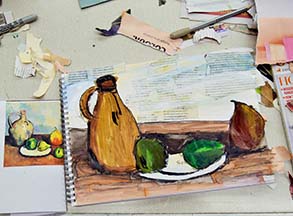

In each half hour session we changed the order of the media we were working in, for example starting one in collage another with drawing and the third with paint. This also made us step out of our comfort zones and adapt our habitual techniques. In the final sketch session which focused on movement Marianne encouraged us to physically recreate the movement in the picture through hand gestures and whole body movement.
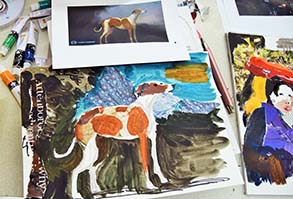

It was a wonderful workshop and I am sure we all came away with a greater admiration of the Old Masters and feeling braver about being innovative in our own art. Looking at the array of our work at the end of the evening it was amazing to see what had been accomplished in three half hour sessions. The workshop was led with great enthusiasm by Marianne Dorn and was both challenging and inspirational. Many thanks to Marianne for all the planning that had clearly gone into it.
Opening of display of posters
Underpass connecting St. Andrews Street to Aldi supermarket on A414.
6th December 2022

Angela Roberts with Hertford Mayor Sue Barber
The good folk at Hertfordshire County Council are doing a grand job brightening up Hertford’s subways by commissioning large scale reproductions of pictures by local painters – school children and older citizens.
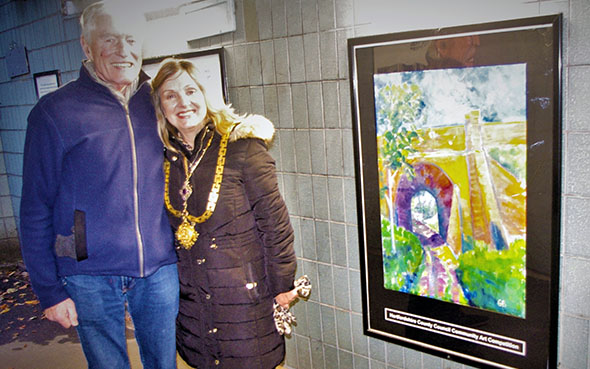
Geoff Bennett with Hertford Mayor Sue Barber
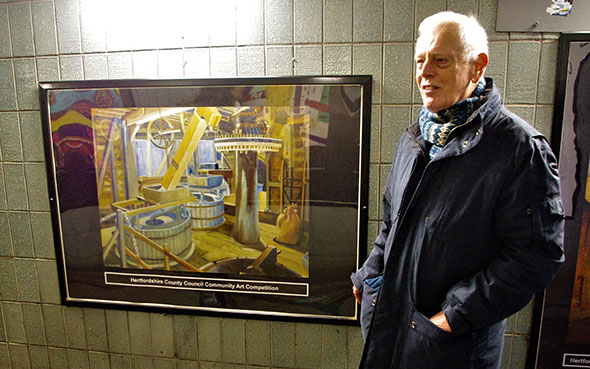
Joe Rowson
In mid-2022 the Council put out a call for pictures depicting Hertford and its surrounding area, for hanging in the underpass that connects St Andrews Street with the Aldi supermarket. Seven of the chosen pictures were from Members of our Society; Mitiko Murata had two of hers on display. On a particularly cold afternoon in December we turned out to celebrate the opening of the display, presided over by the town’s mayor, Sue Barber.

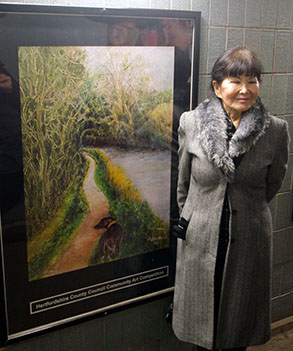
Left: Ray Ward; Right: Mitiko Murata
Rather pleasingly the pictures line one side of the subway opposite a permanent display of work by an internationally-famed artist, Alan Davie, who lived for many years at Rush Green, just west of the town. It’s the closest one of my pictures will ever get to such exalted company.
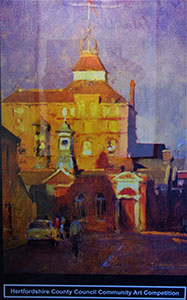

Left: Trevor Chamberlain; Right: Kay Fride
Congratulations to Mitiko Murata, Joe Rowson, Angela Roberts, Ray Ward, Trevor Chamberlain and Kay Fride.
Geoff Bennett
Cityscape in Acrylics
Demonstration by Mike Rollins - 29th November 2022
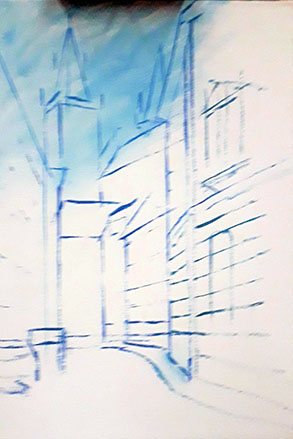
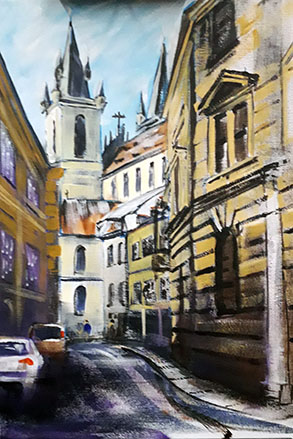
Mike Rollins is a professional artist, demonstrator and tutor who trained as a scenic designer. This has influenced his paintings and he thinks of them as if they are a stage set, open to rearrangement for dramatic purposes. He rarely paints a location exactly as he finds it, preferring to alter weather, lighting or viewpoint to suggest an alternate narrative. Mike showed us a few examples of his work. They had lots of atmosphere and drama.
Mike had chosen one of his photographs of Prague for this demonstration, a narrow street with a view of the Old Town Square and the gothic church of Our Lady before Tyn with its famous towers. It was a snowy day. He approaches acrylic painting as if it was watercolour using light washes to build up the image. He had prepared a canvas board with two coats of white gesso and using cerulean blue he applied a scumbled wash to the sky area and then proceeded to sketch the scene in the same colour. Using a rigger brush as an aid in determining and transferring angles, Mike drew a very accurate sketch detailing the slope of the roofs, the church towers and the angles of the windows and stonework on the buildings on either side. There is a low eye line in this scene and steep angles to the vanishing point.
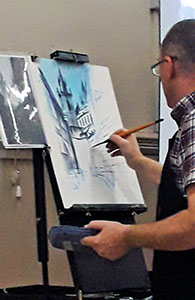


Using a large flat brush (“Master’s Touch” angular shader No 6) a “Dagger” brush and a mixture of Burnt Umber and Ultramarine Blue, Mike follows the line work of his sketch. This flat brush is ideal for fine marks for the windows etc. and for dry brushing the buildings in shade. Dark areas are applied to the shadow side of the towers. At this stage the painting is all about tone. Areas can be lightened later as needed.
Changing to a Rosemary & Co No 7 nylon flat brush, Mike uses mixtures of Naples Yellow and White to indicate the strong light coming from the left to strike the steep towers and to detail the distant buildings catching the sun.
Mike uses student quality acrylic paint for this demonstration. It is fine for layering as it contains less pigment than artists’ quality. He also likes the flip top!
A bold purple wash is applied to the building on the left. Burnt Sienna is dry brushed onto the distant roofs and added here and there to the painting to add some warmth. Yellow Ochre alters the purple area and warms the stonework on the right and building, windows are detailed with a dark mix and this is used to add additional shadows to the towers and distant buildings and a couple of small figures.
Final highlights are added using Titanium White on the towers, roofs, the car in the foreground and dragged across the roadway to give a wet and snowy appearance.
The resulting image is bold and full of atmosphere. The buildings on either side lead the eye to the stunning towers of Prague’s Old Town Square. Mike gave many hints and tips throughout the demonstration as well as sharing details of his artistic career. His experience in the theatre impacts strongly on his paintings. He likes his artwork to tell a story. His use of strong tones was inspirational and he was warmly thanked for an excellent demonstration.
Still life -polished, reflective and shiny objects
Untutored drawing and painting workshop - 15th November 2022
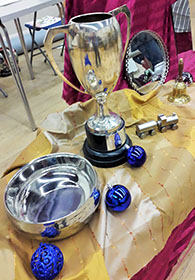
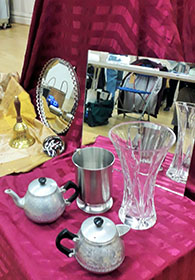
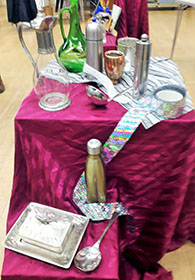
Members were invited to bring something shiny to this workshop and several different collections of objects were set up, using gorgeous magenta and golden cloth as backdrops. There were trophies, tankards, vases, decanters as well as a stork and miniature train with some colourful objects adding variety.
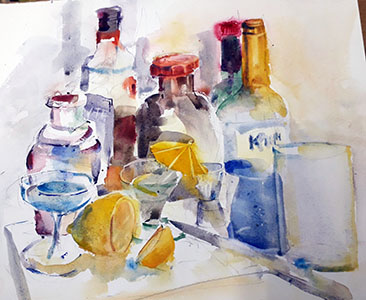

Artists were free to sketch, draw or paint in any medium of their choice. This was certainly a challenging workshop but very enjoyable. The artworks produced are exciting and colourful studies of these interesting and tricky subjects.
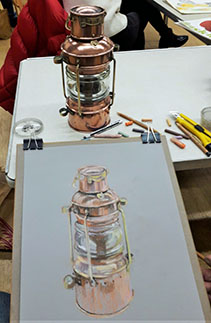
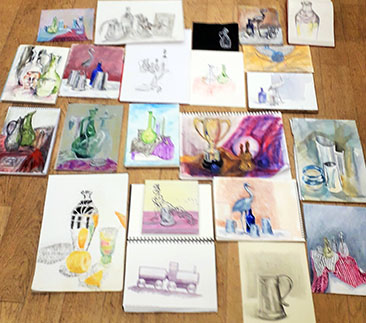
Hertford Art Society 24th Members’ Show
“Once again the Members Exhibition at the Hertford Art Society has been a very enjoyable experience. What struck me the most was how eclectic the show was; there was a wide range of artworks to be seen, styles to please all tastes and to fulfil everyone’s expectations!
From paintings of movie characters portrayed by Uma Thurman, Audrey Hepburn and Sharon Stone to picturesque landscapes, cityscapes and flowers; along with intriguing abstract paintings, beautiful and fun sculptures and 3D works among others. All of the artworks were very considerately priced and once again I have found another lovely painting that became part of my collection.”
Naomi Haines
Prizewinners - October 2022
Marie Goldsmith Award for a Member with a high standard of work who has served the Art Society well without formal recognition
- Unrooted by Uday Chitragar - Watercolour
Stephen Lowe Award for most intriguing work
- Cycle of Life by Alona Kushnirenko - Oil
Visitors' Choice Award
- Urban Calm by Kathy Burman - Collage
Enid Fairhead Award for best work chosen by Members
- Joint Winner - Mischief by Donna Chamberlain - Watercolour
- Joint Winner - Head Study by Rosemary Shi - Oil
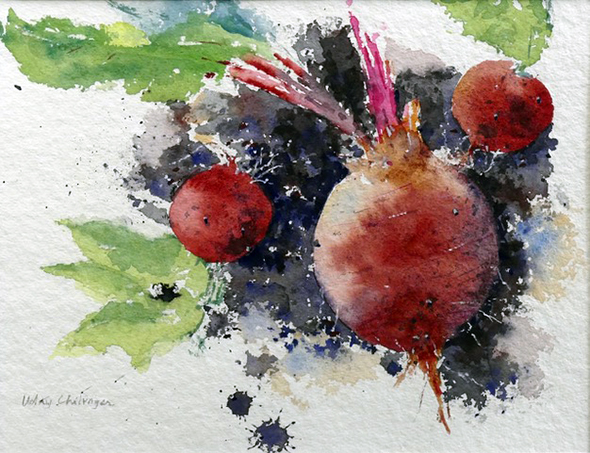
Unrooted by Uday Chitragar - Watercolour
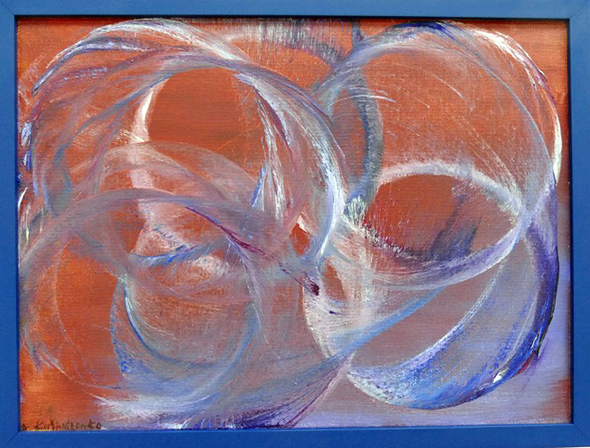
Cycle of Life by Alona Kushnirenko - Oil
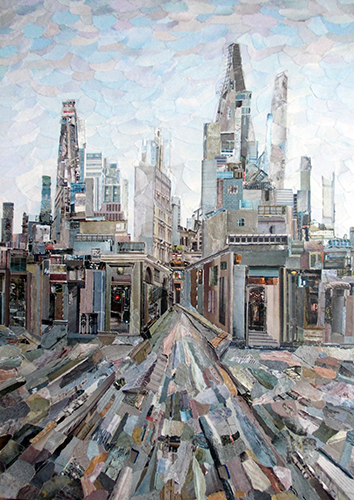
Urban Calm by Kathy Burman - Collage
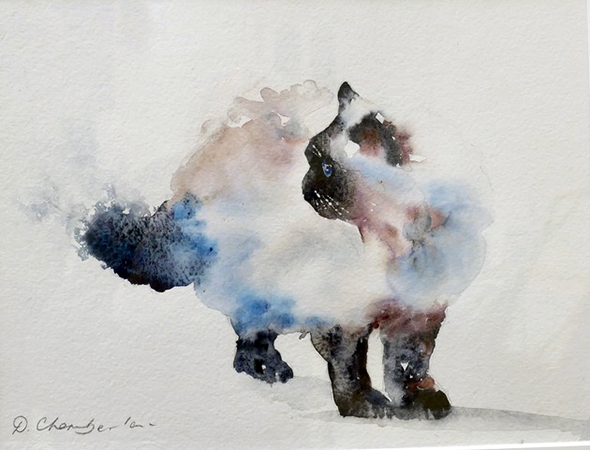
Joint Winner - Mischief by Donna Chamberlain - Watercolour
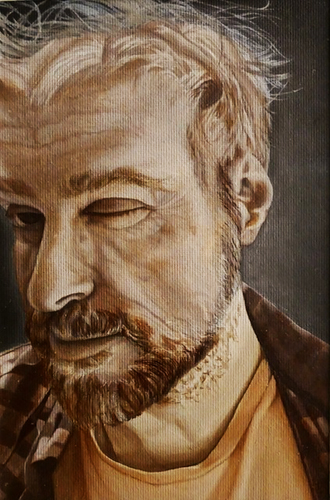
Joint Winner - Head Study by Rosemary Shi - Oil
For full report, click here for more details.
Expressive Drawing and Drawing Workshop with Susan Dean
Animal Portraits - 11th October 2022

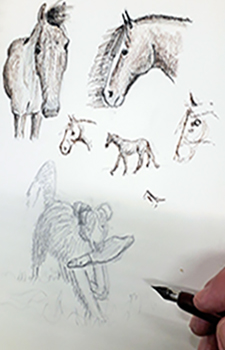
Susan Dean has experience of teaching art to primary, secondary and adult students and began by talking about artists such as Warhol and Durer and their animal portraits. She admired the boldness of Warhol’s prints and inspires her students to be equally courageous.
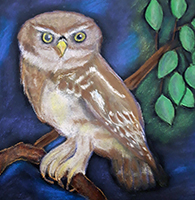
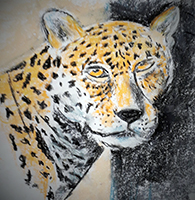
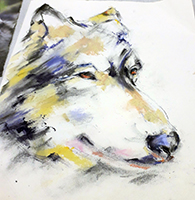

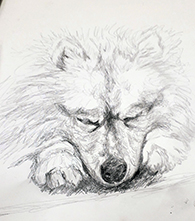
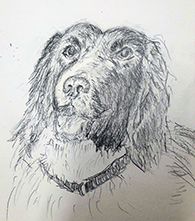
Susan showed us a variety of her own work and did a short demonstration using a large photo of the head of a rhinoceros. She likes to work to a large scale with charcoal and pastel, using the colour to add character. She started by positioning the eye and made bold marks defining the angles and positions of the ears and rhino’s horn, smudging the charcoal to correct the drawing and show texture. She was careful to leave the light in the eye and quickly filled the paper with a bold portrait, adding orange, ochre and some blue for shadows. This demonstration was brief to enable the Members to make an early start to their own portraits.

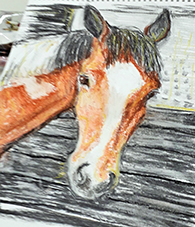

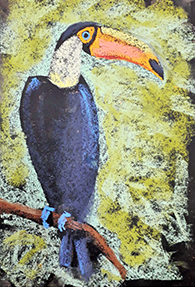
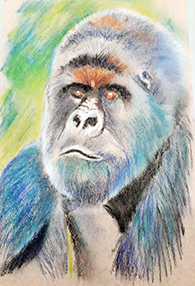
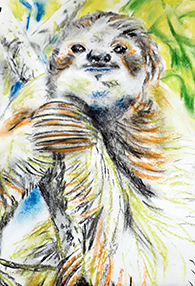
Susan had a great collection of photos to share and artists began to work on their chosen image. Drawing animals was quite a departure for many but it presented an exciting challenge and Susan spent time giving tips and advice. Some artists did two or more sketches as the evening progressed.
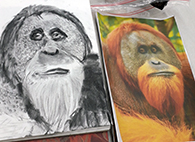

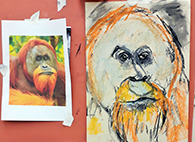


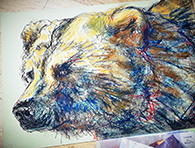
This was a very enjoyable workshop. The completed sketches, drawings and paintings were colourful, bold and varied and Susan was warmly thanked for sharing her approach to animal portraiture.
Watercolour Demonstration with Keith Hornblower
Buildings in a landscape - 27th September 2022
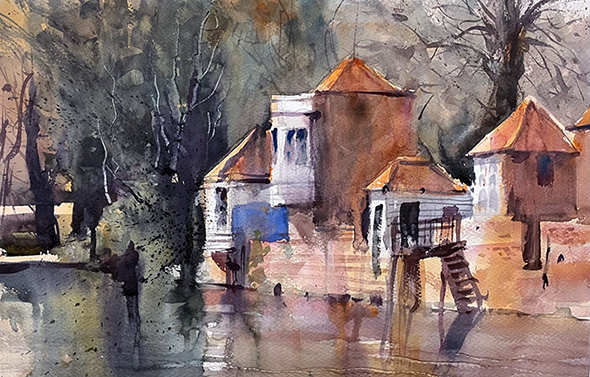
Following a very successful career as an architectural illustrator (a Fellow of the Society of Architectural Illustration) Keith Hornblower turned to a much looser, expressive approach with his own work in watercolour. He is based in Hitchin, regularly exhibits and runs courses and workshops.
His approach is dynamic and spontaneous, applying paint at speed, moving and adjusting washes as he progresses and for this demonstration Keith has chosen a photograph of the Gazebos on the River Lea at Ware.
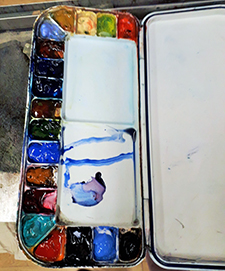
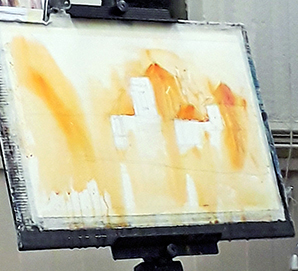
He has taped a sheet of Saunders Waterford watercolour paper, 140lb Rough, to a board on an easel. He mentions that he does not tend to stretch the paper before painting. If needed, he does this afterwards by damping the reverse and then stretching onto a board. He sometimes works on a flat surface but rather likes the runs and unpredictability of using an easel.
Keith sketches the buildings using a blunt, 4B pencil, holding it by the end so that the drawing doesn’t get “tight”. He defines the basic shapes and angles with the horizontal lines defining the eye level. He decides what should be focal point of the painting - in this image, the white walls. Tonal values are very important to him, ensuring there is sufficient light and shade in his pictures. He uses colours for dramatic effect rather than trying to reproduce them literally, thinking mainly in terms of warm and cool, and often working with a simple triad of primary or secondary colours. Some colours are transparent and mix cleanly, allowing layers of paint to be added while maintaining clarity. Other shades are opaque and tend to create muddy mixes – fine if that is what is needed. His palette is created by squeezing tubes of colour into the pans and he recommends Schmincke paints. For this demonstration he uses Pthalo Blue, Transparent Orange, Alizarin Crimson and Yellow Ochre mainly as these will give the shades he needs.
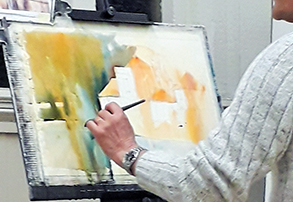

With a large squirrel-haired brush (holds a lot of paint and comes to a fine point) Keith applies a Transparent Orange wash of varying strengths across the paper, defining the roofs of the gazebos, carefully preserving the white areas. He adds Yellow Ochre to the wall, keepings the wash moving, working quickly. He intensifies the roof colour with Alizarin Crimson being quite bold as watercolour always dries a lighter shade. He tones the reflections a little with a blue wash.
He mixes Pthalo Blue and Transparent Orange to make an intense blue/green and outlines the roofs working across the woodland area. Some of the paint drips make good reflections. Keith uses tissue to lift some areas and dries his brush now and then to drag across areas. Dark tones create the shadow sides of the buildings. He works back and forth across the painting, intensifying and creating strong contrasts, using his fingers now and then to blend or smudge. Hard edges draw the eye. Keith describes his approach and welcomes questions and comments as the painting progresses.
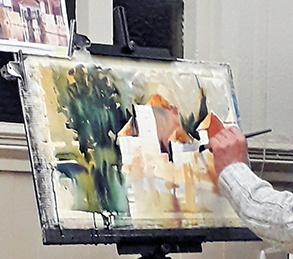
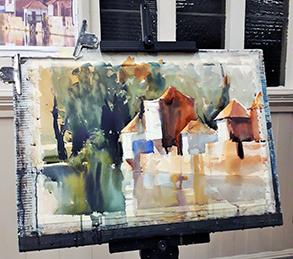
Keith begins to add detail and using a smaller brush buildings and roofs are defined, features added, reflections enhanced using warm and cool darks. The tones are constantly reworked. Final touches include adding a “greener” green to the foliage, painting a few bold tree trunks with a rigger brush, scraping out branches with a sharp painting knife, adding streaks to the water with a fanned out bristle brush and spattering some paint over the background.
Keith finds watercolour a medium of endless possibilities and constantly explores different ways of using this exciting medium. The finished painting is bold and vibrant and Keith is thanked for giving such an interesting and informative demonstration of his approach to watercolour painting.
Portrait Workshop with Keith Morton
13th September 2022
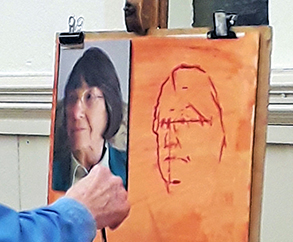
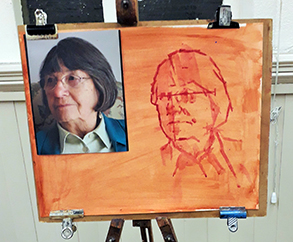
Keith Morton’s art education was gained during four years at Hornsey College of Art. A prizewinning artist, Keith is an enthusiastic tutor and believes that good observation leads to good paintings. He now tutors Portraiture, Still Life and Life workshops, demonstrates Still Life and Portraiture to art societies, undertakes commissions, and paints people he admires.

Keith is a very popular visitor and this Workshop was very well attended. He began with a short demonstration of his technique on commencing a portrait. He had a photograph of a woman, almost life sized, taped up alongside his board, which had been prepared with an orange ground. Working with Alizarin Crimson acrylic paint and a small brush he began by marking the top of the head, the chin and the approximate eye line. He measured from chin to eye using the length of his brush and transferred these measurement to the drawing. He placed the position of the right eye and, again, using the brush to establish the angle, he drew a line across at eye level indicating the slant of the face. Positioning the brush against the photo at key points enables one to replicate the angles on the drawing. Each feature was plotted and marked in relation to each other, with constant checking of angles and distances, re-measuring and correcting looking at changes in direction. He emphasised that the angles of these small marks were important – they act as a guide. He established the line of the cheek. The model wore spectacles and these were an important element. Horizontals and verticals help to check that things are going to plan. He uses the same technique when working from life, holding his brush to measure and transfer angles and distances to his drawing.
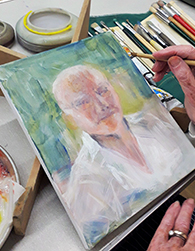
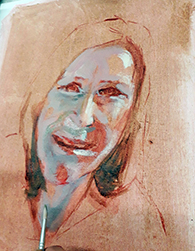
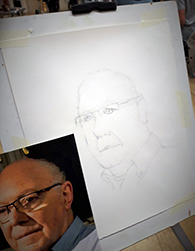
The drawing gradually began to take shape as Keith repainted and corrected. He mentioned that it is equally important to place clothing (collars etc.) correctly thus giving credibility to the image. Using a larger brush and a diluted wash of colour, Keith applied bold shadows to the right hand side of face and concluded the demonstration. He felt that this measuring technique may not suit everyone but that it can be really helpful when encountering problems with a likeness. There may just be one or two points where measuring will help correct things.
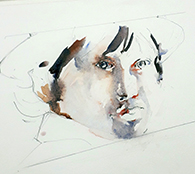
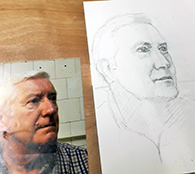

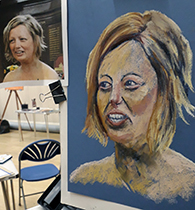
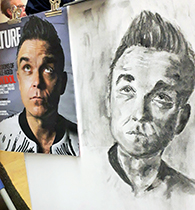
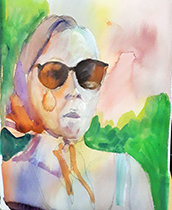
Members had been asked to bring a photograph and an art medium of their choice and everyone got to work, the concentration was intense as we all tried to achieve a good drawing. Some used only pencil or charcoal, others watercolours or acrylic paint and during the remainder of the Workshop Keith managed to spend time with most people, giving tips and encouragement. The variety of work was inspiring.
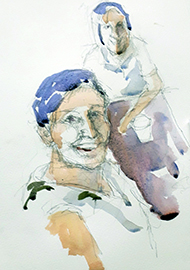

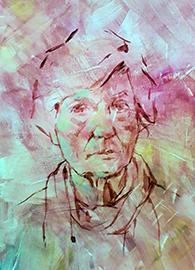
Keith was warmly thanked for sharing his knowledge and experience with us. This was a very enjoyable Workshop with some excellent portraits achieved in a very short time.
Summer Painting Weekend at Maldon, Essex
24th – 26th June 2022
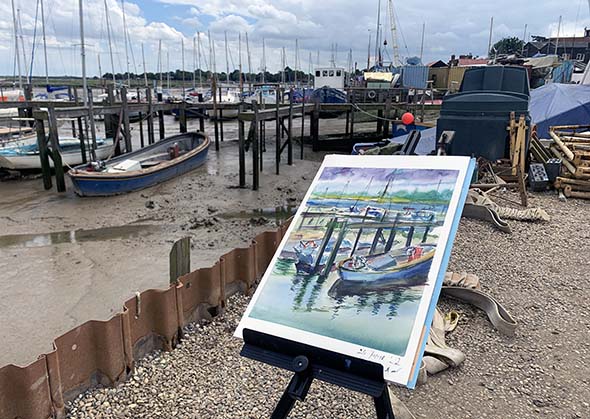
Maldon is a historic maritime town, a Saxon port and the second oldest town in Essex, receiving its Royal Charter from King Henry II in 1171. Situated on the Blackwater Estuary, it has a lively harbour and the town centre has numerous historical sites and listed buildings. One day was spend in Maldon and the next at the Heybridge Basin. There were some brilliant painting and sketching opportunities to be had and a large group of Members enjoyed great weather and produced some exciting artworks in various mediums, as can be seen in the display.
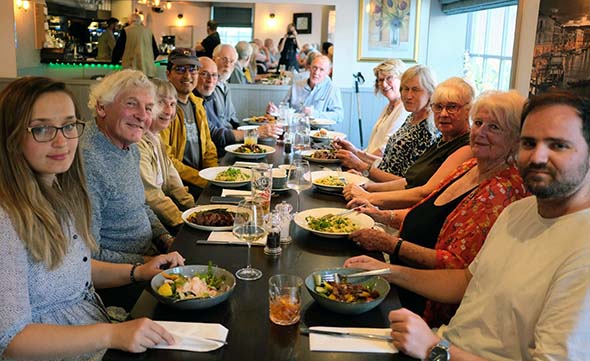
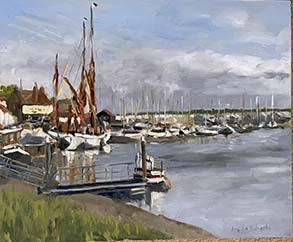
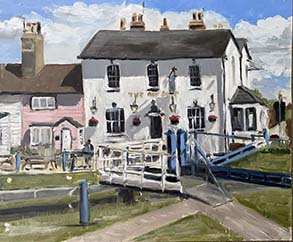
“The weekend in Maldon was thoroughly enjoyed by everyone , great places to paint as well as the normal plein air problems, try to find a shady spot to set up as well as avoiding the wind !! Great fun though, and great company in the evenings.” Angela Roberts
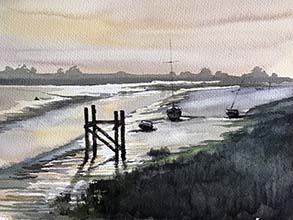
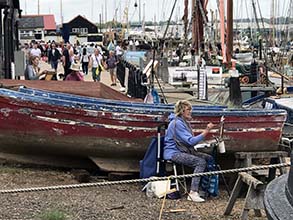
“Maldon on the Blackwater estuary in Essex has been inspiring artists for many decades: home, not just to a large collection of picturesque sailing barges, but boats of all vintages, shapes and sizes. Couple that with the associated paraphernalia of several boatyards and a broad winding estuary and you have sufficient subject matter to keep any artist happy for several years!
We were extremely lucky with the weather and all but one of our number managed to paint “en plein air” like proper artists while I’m embarrassed to say I did mine safely ensconced in my digs at the “Fish on the Quay” pub - my excuse being my inability to cope with rapidly changing light at 6.00am!” Chris Baker
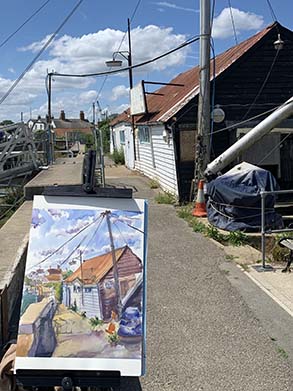
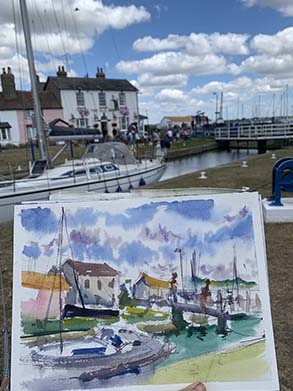
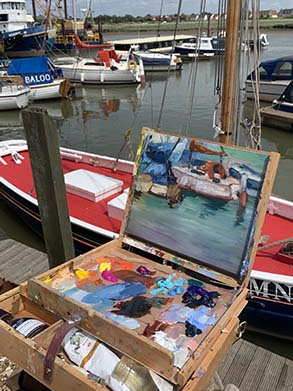
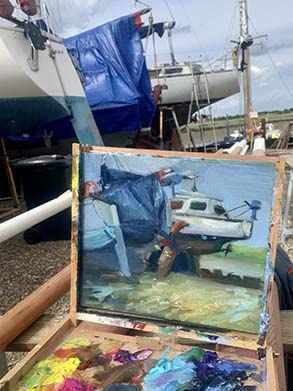
“Maldon is wonderful town for artists , you can paint and sketch boats and reflections, architecture and water lilies on the river. Maldon and Heybridge Basin are full of life and the joy of colourful boats and flights of gulls. I definitely will come back and paint more and check the trails down the River Blackwater. I hope Hertford Art Society will show the atmosphere from Maldon in the next exhibition in October 2022.” Elena Russu
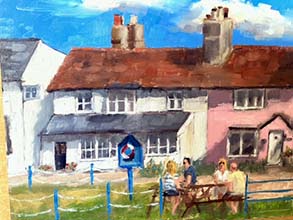
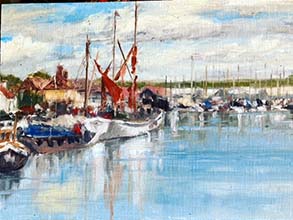
“It was an enjoyable weekend painting in Maldon, and the weather was good to us. On Sunday most of us went to Heybridge Basin, a lovely area, but very windy, good for sailing but not so good for keeping your easel steady! Kay Frid
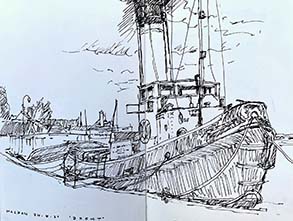
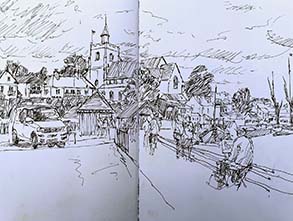
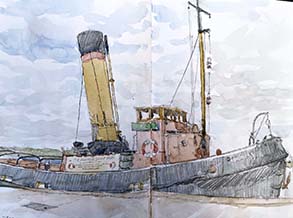
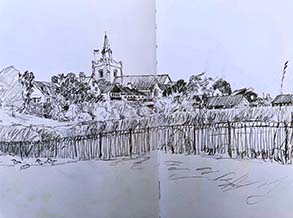
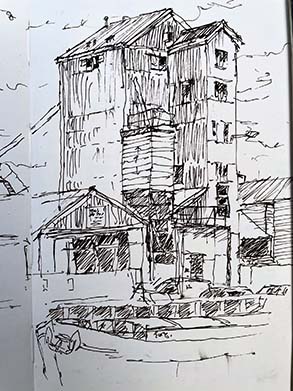
"Great weekend." John Jarratt
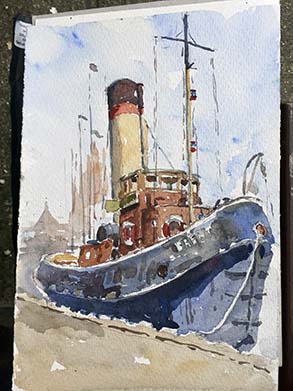
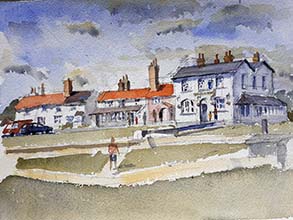

"Very enjoyable." Ray Ward
Hertford Choral Society - Rehearsal of “All That Jazz” at Sele School
- Drawing and painting the Choir and Musicians - 10th May 2022
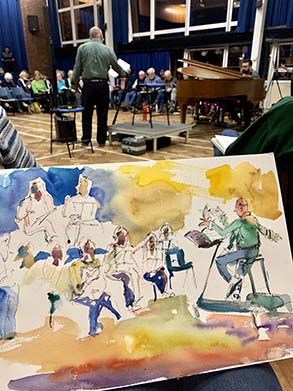
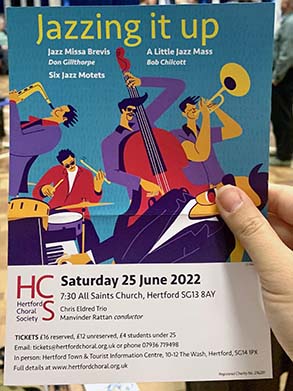
We were delighted to be invited to Hertford Choral Society’s rehearsal session at Sele Farm School. Artists gathered to paint and draw the choir and musicians and to enjoy the programme of songs from “All That ‘Jazz”. This was the first session in the Summer Programme and was certainly rather different from the usual challenge of drawing and painting various scenes outdoors. The work produced was colourful and lively and echoed the terrific range of songs which will feature in the Choral Society’s forthcoming concert. The Choir and musicians were warmly thanked for inviting us to this very enjoyable evening.

by Craig Alan Lee.
“All That Jazz” will be performed on Saturday 25th June 2022 at 7.30pm at All Saints Church, Hertford, SG13 8AY.
- For details – go to www.hertfordchoral.org.uk
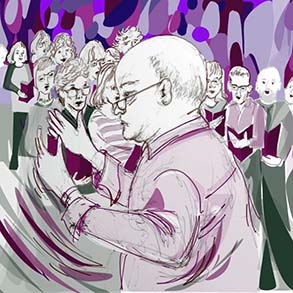
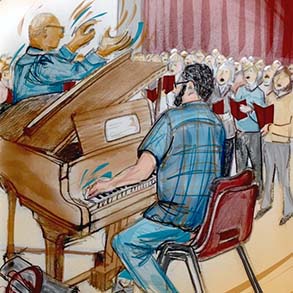
by Sally Steele.
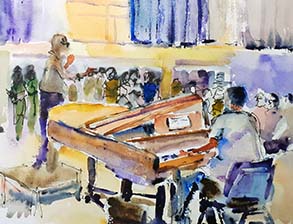
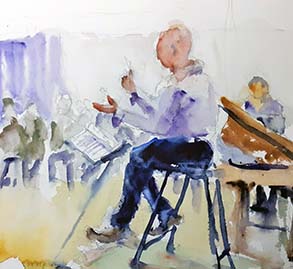
by Michael Radley.
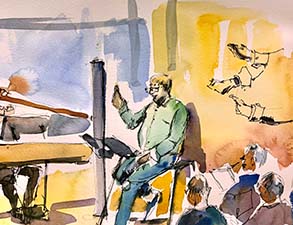
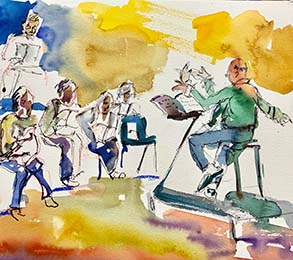
by Elena Russu.
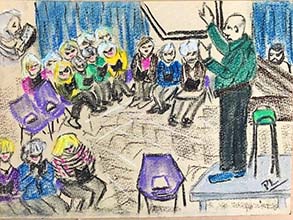
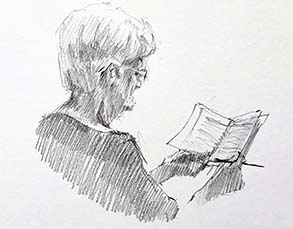
Left by Persis Limbuwala. Right by Chris Baker.
Archive PROGRAMMES
Winter 2022-2023 programme
Summer 2022 programme
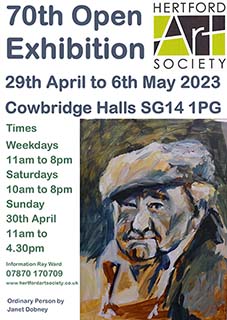
70th Open Exhibition prizewinners, 2023.
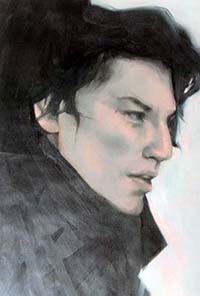
The John Goss Prize Best in Show awarded to Jess Williams for ‘Man in Monochrome’
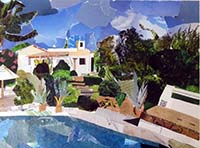
The Bill Dale Award Best Member awarded to Sally Hunter for ‘Villa Simiali’

The Brushes Award by A.S. Handover Ltd for best watercolour awarded to Valerie Gudge for ‘Lockdown 2020’
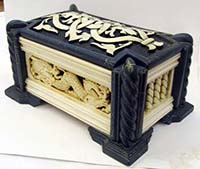
The Mayors Award Sponsored by The Arts Society East Herts for best 3D awarded to Keith Lawrence for ‘Dragon’s Keep’
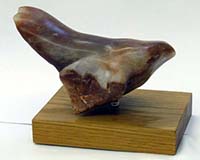
The Lady Laming Award Best Abstract awarded to Anne Gascoigne for ‘Fallen Bird’
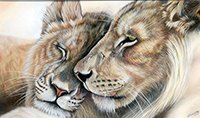
Visitors’ Choice awarded to Helen Tansley for 'Love'
Winners of Critique Sessions 2022-2023 season
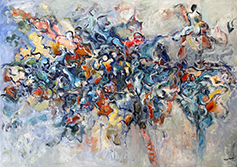
September 2022 Critique Winner, Mitiko Murata. Generations - Oil.
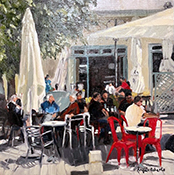
September 2022 Critique Joint Runner Up, Angela Roberts. Chnaia - Oil.
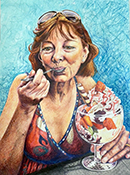
September 2022 Critique Joint Runner Up, Sally Steel. A Taste of Summer - Acrylic & Pencil.
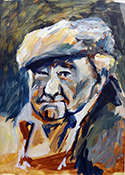
October 2022 Critique Winner, Janet Dobney. Ordinary Person - Acrylic.
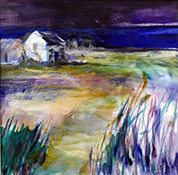
October 2022 Critique Runner Up, Carol French. Threatening Sky - Acrylic.
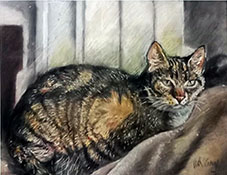 November 2022 Critique Winner, Derek Carey. Lucy - Pastel.
November 2022 Critique Winner, Derek Carey. Lucy - Pastel.
 November 2022 Critique Runner Up, Angela Roberts. Ilvinos - Oil.
November 2022 Critique Runner Up, Angela Roberts. Ilvinos - Oil.
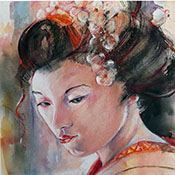 November 2022 Critique Runner Up, Jill Rolfe. Geisha - Watercolour.
November 2022 Critique Runner Up, Jill Rolfe. Geisha - Watercolour.
 November 2022 Critique Runner Up, Mitiko Murata. Feathers - Watercolour.
November 2022 Critique Runner Up, Mitiko Murata. Feathers - Watercolour.
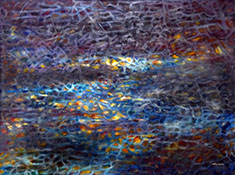
December 2022 Critique Winner, Mikito Murata. Untitled - Oils.
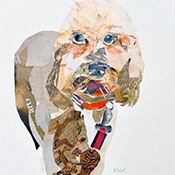
December 2022 Critique Runner Up, Sally Hunter. Mabel - Collage.

December 2022 Critique Runner Up, John Jarratt. Window in Grenada - Oils.
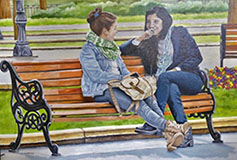
January 2023 Critique Winner, Mike Lawrence. Conversation - Oil.
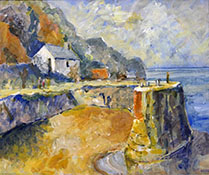
January 2023 Critique Runner Up, Ray Ward. Port Gain - Acrylic.
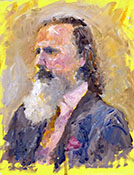
February 2023 Critique Winner, Ray Ward. Portrait TBA - Oil.
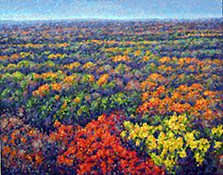
February 2023 Critique Runner Up, Chris Hewitt. Algonquin Park - Acrylic.
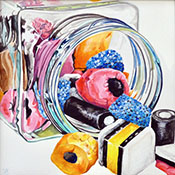
February 2023 Critique Runner Up, Sally Steele. All Sorts - Watercolour.

February 2023 Critique Runner Up, Kate Tyrer. Across The Heath - Watercolour.